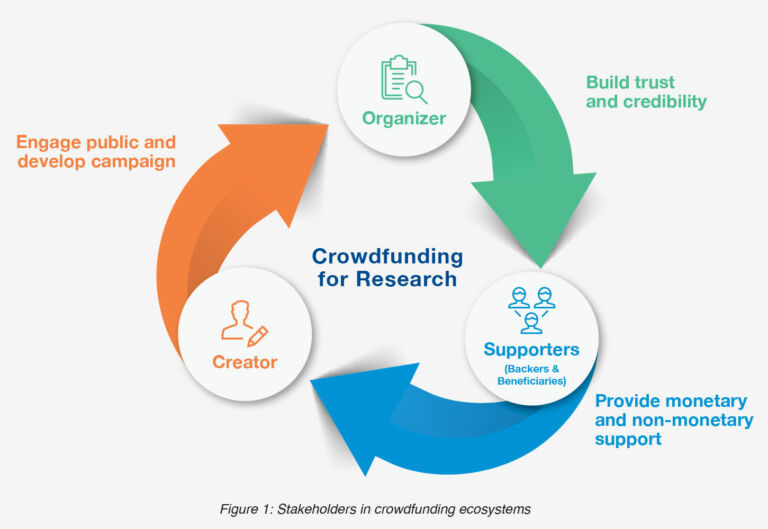How crowdfunding works
Crowdfunding is a multi-stage process that engages three key groups: creators, supporters (both backers and beneficiaries), and organizers (see Figure 1). The traditional crowdfunding campaign process predominantly takes place online, where the creators develop their content and liaise with the relevant crowdfunding organizer to promote and seek financial support from the backers. However, in-person interactions and involvement with the public are a significant part of the campaign process.
There are two types of crowdfunding models: “all-or-nothing” and “keep-what-you-raise”. In the all-or-nothing model, once the crowdfunding target and time-period is set, the creators only receive the funds if they successfully raise their targeted amount within the specified period. In the keep-what-you-raise mode, they can keep the amount of money that is raised, regardless of whether they achieve their target.
The all-or-nothing model, although it does not provide financial security to creators, has been proven to be more successful as it provides backers with more confidence in the project. Although the keep-what-you-raise model often seems safer to creators, it has, however, lower success rates and in some cases the organizer might charge a fee regardless of what has been raised. This model is more popular among charities and non-profit organizations. Most research crowdfunding uses either donation-based or reward-based models. Donation-based crowdfunding is philanthropy-based where the backers fund the project without expecting anything in return, while the rewards-based model promises some non-financial products or rewards in exchange of their investment. Most scientific research and health-based projects generally follow the donation-based crowdfunding model because of their non-profit and non-commercial nature and their pledge of relatively small funds.
